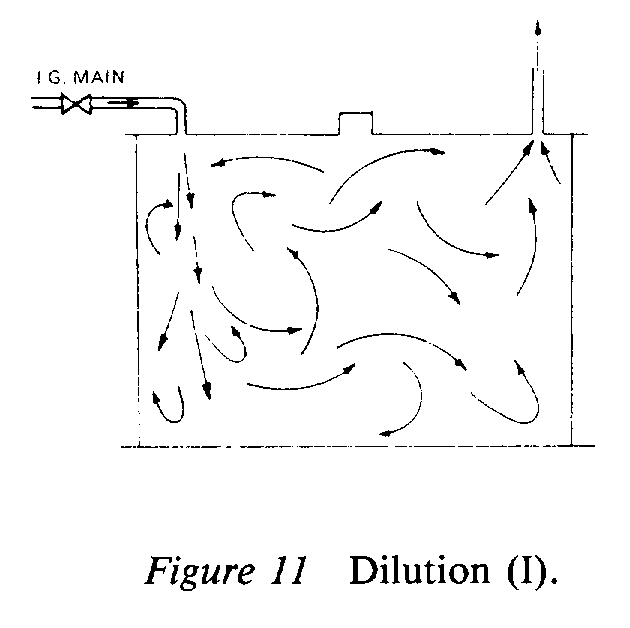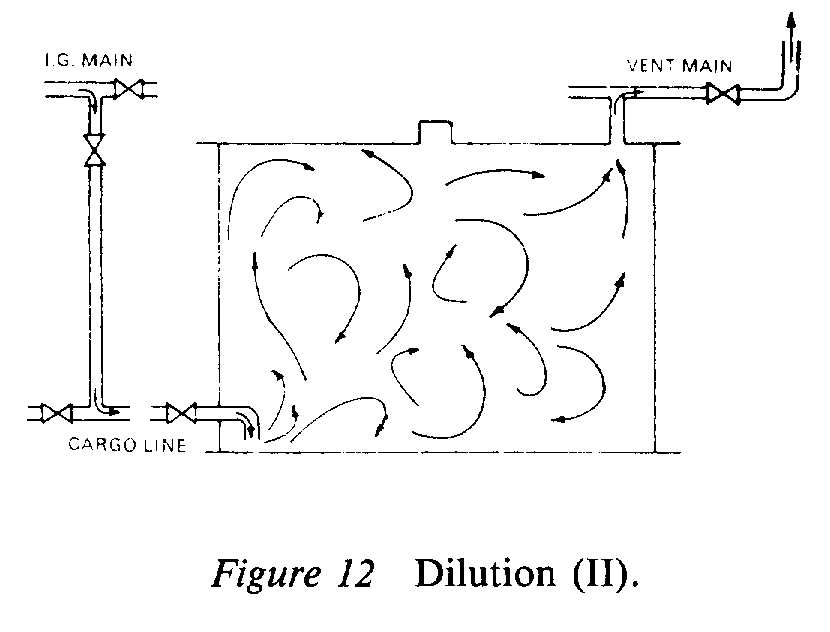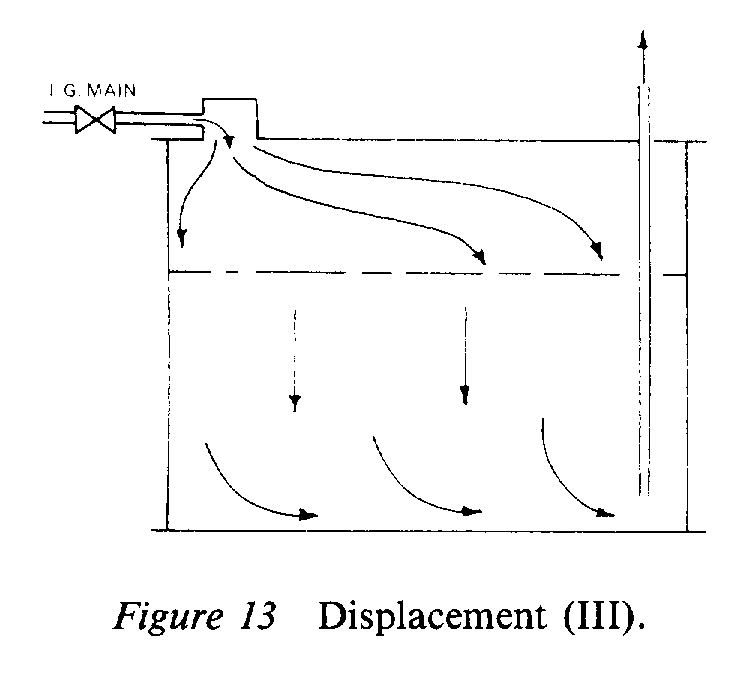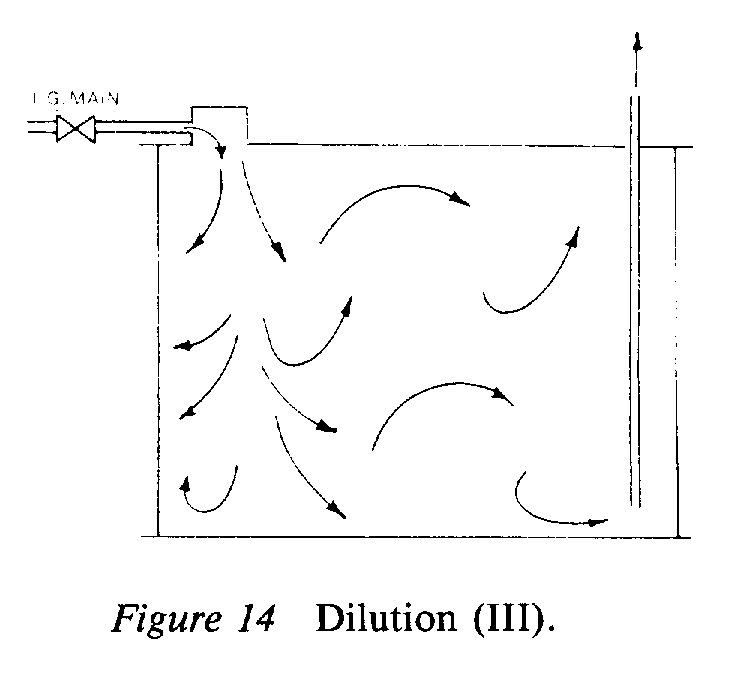3.11.1 The principles of dilution and displacement
have already been described in 2.6.3 and 2.6.4.
Their application to specific installations depends on a variety of
factors, including:
-
.1 the results of laboratory tests;
-
.2 whether or not purging of hydrocarbon gas is
required in every tank on every voyage; and
-
.3 the method of venting cargo tank vapours.
3.11.2 Several arrangements are possible. One
feature which should be common to all is that the inlet and outlet
points should be so located that efficient gas replacement can take
place throughout the tank.
There are three principal arrangements:
| Arrangement
|
Inlet point
|
Outlet point
|
Principle
|
| I
|
top
|
top
|
dilution
|
| II
|
bottom
|
top
|
dilution
|
| III
|
top
|
bottom
|
displacement or dilution
|
It will be noted that all three
arrangements can be used for inerting, purging and gas-freeing, and
that a particular ship design may incorporate more than one arrangement.

Dilution (I).

Dilution (II).

Displacement (III).

Dilution (III).